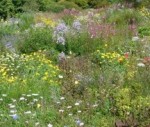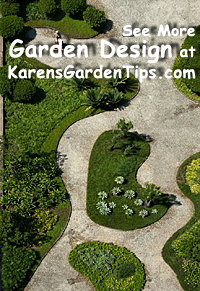 The carefree relaxed look of an informal garden is very appealing. But don’t be deceived into believing that this look comes naturally. The best informal gardens are carefully planned, executed and tended so that the informal look is attractive all season and year after year. Without forethought and effort a beautiful romantic garden can become overgrown or overrun by plant thugs. When well done, the informal garden gives the impression of change, unpredictability, and spontaneity.
The carefree relaxed look of an informal garden is very appealing. But don’t be deceived into believing that this look comes naturally. The best informal gardens are carefully planned, executed and tended so that the informal look is attractive all season and year after year. Without forethought and effort a beautiful romantic garden can become overgrown or overrun by plant thugs. When well done, the informal garden gives the impression of change, unpredictability, and spontaneity.
The traditional English cottage garden is the most familiar example of an informal garden but meadow and woodland gardens are also good examples. Although they are very different, they all share certain characteristics that identify them as informal.
 Hardscape subordinate to plant; plants dominating the scene but a simple bench or fence might be included.
Hardscape subordinate to plant; plants dominating the scene but a simple bench or fence might be included.
 Asymmetrical balance; beds of different shapes, sizes, and location with different plant in each bed.
Asymmetrical balance; beds of different shapes, sizes, and location with different plant in each bed.
 Lack of strict rules regarding design elements; proportion and scale are important but they do not dominate the design. Repetition is used sparingly if at all.
Lack of strict rules regarding design elements; proportion and scale are important but they do not dominate the design. Repetition is used sparingly if at all.
 Natural or amorphous-shaped beds.
Natural or amorphous-shaped beds.
 Curving paths that wind and meander.
Curving paths that wind and meander.
 Use of native and heirloom plants growing into their natural shape.
Use of native and heirloom plants growing into their natural shape.
 Natural, rustic and whimsical ornaments; a bucket or a wheelbarrow serve as containers; a found treasure as a focal point; a log bench or tree stump for seating.
Natural, rustic and whimsical ornaments; a bucket or a wheelbarrow serve as containers; a found treasure as a focal point; a log bench or tree stump for seating.
 The unrestrained look of the informal garden has to be controlled by regular care such as watering, weeding, and transplanting. It will probably survive if neglected but to look attractive all season it will need some attention. As with any garden, a good plan and design is the best way to ensure success.
The unrestrained look of the informal garden has to be controlled by regular care such as watering, weeding, and transplanting. It will probably survive if neglected but to look attractive all season it will need some attention. As with any garden, a good plan and design is the best way to ensure success.